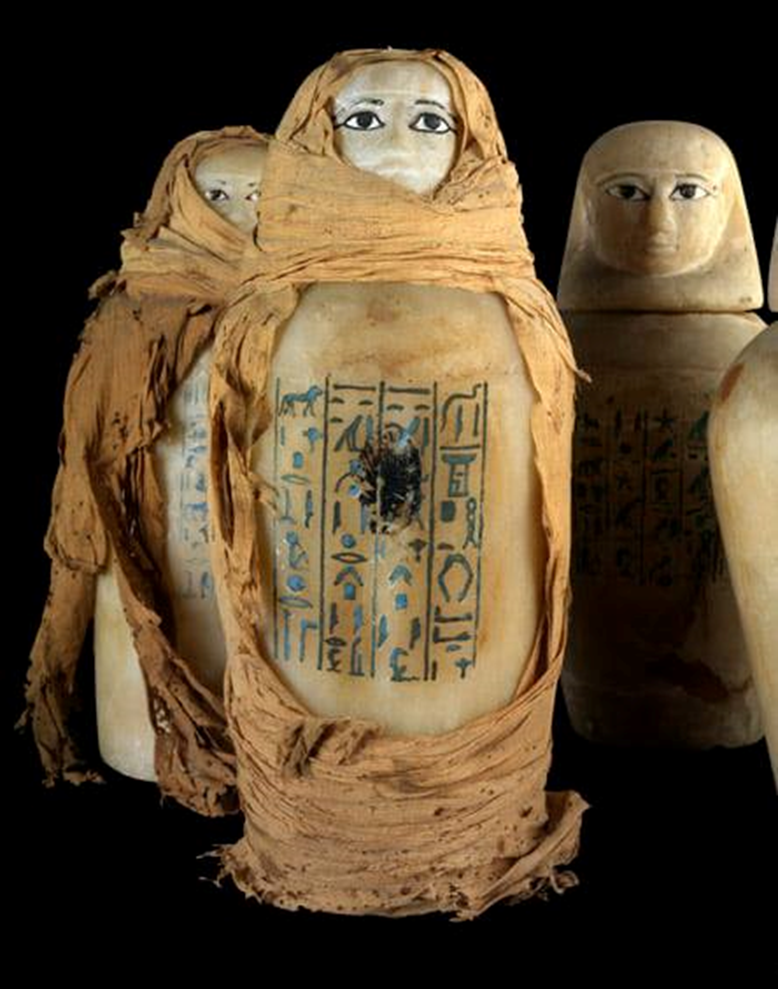?Why did the ancient Egyptian use canopic vessels during the mummification process

The Egyptian Museum in Tahrir, one of the largest international museums, displays a large number of artifacts, exceeding 50,000 pieces, to visitors, and among the unique pieces in the museum are canopic vessels.
The ancient Egyptians used canopic vessels to preserve the entrails of the deceased during the mummification process. The vessels initially had flat lids, then they began to have human heads in shape close to the deceased. After that, each vessel had a distinctive lid, shaped like one of the “four sons of Horus for protection.”

Canopic containers
The vessel whose lid takes the shape of a baboon is called “Hapi,” and the lung is preserved in it. The vessel whose lid takes the human form is called “Imste,” and it is responsible for preserving the liver. The vessel whose lid takes the shape of a jackal was called “Dawa Mut If,” and it preserves the stomach. As for the vessel whose lid was in the shape of a falcon, it was called “Snow F’s Ugly,” according to what the Egyptian Museum in Tahrir stated on its official page.
The Egyptian Museum consists of two floors, the ground floor of which is allocated to heavy antiquities “such as stone coffins, statues, paintings, and wall inscriptions,” while the upper floor is allocated to light antiquities such as “manuscripts, statues of deities, royal mummies, antiquities of daily life, pictures of mummies, unfinished sculptures, statues and utensils of the Greco-Roman era, and antiquities related to life beliefs.” Others”, as well as complete collections such as the “Tutankhamun Collection ”.
The museum also includes a huge number of Egyptian antiquities from prehistoric times until the end of the Pharaonic era, in addition to some Greek and Roman antiquities, including “a collection of pottery (from prehistoric times), the Salat of Narmer (the era of monotheism), the statue of Khasekhem (the Dynasty). 2), the statue of Djoser (Dynasty 3), the statues of Khufu, Khafre, and Menkaure (Dynasty 4), the statue of Kaber and the statues of servants (Dynasty 5), the statue of the dwarf Seneb (Dynasty 6), the statue of Mentuhotepnebhebetre (Dynasty 11), and the statues of Amenemhat I and II The third (12th Dynasty), the Ka statue of King Hor (13th Dynasty), the statues of Hatshepsut and Tuthmosis III (18th Dynasty), the Tutankhamun collection (18th Dynasty), the Tanis treasures collection, and a large group of mummies from different eras.
Source : websites

